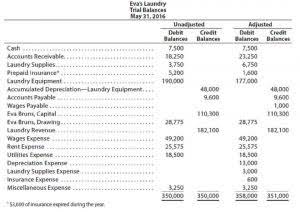
Self-employment wages are also subject to additional Medicare tax (0.9%). If the additional Medicare tax applies, the total tax rate is 3.8% (2.9% + 0.9%). There is no maximum amount of Medicare tax an individual can pay.
It’s easy to get tripped up because you have to withhold the correct amount of FICA taxes from your employees’ paychecks, and you also have to pay the correct employer’s portion of the taxes. Essentially all employees working in the U.S must complete Form W-4, which employers use to calculate federal income tax withholding from employee paychecks. This article describes Form W-4 and what employers must do if there are issues with this form. As a brief refresher, payroll taxes are taxes that both employees and employers pay. Some payroll taxes, like Social Security tax, have both an employee and employer portion. Other payroll taxes, like federal income tax, are an employee-only tax.
Employer Payroll Taxes
The base rate for Social Security taxes of 6.2% has not changed since 1990, but the cap on income changes annually. Comprehensive coverage for your business, property, and employees. However, the employer’s federal return (Form 941) is filed quarterly. Employers also have requirements to file reports with various state and local agencies.
- That means small businesses now need to place remote workers from different states (and even different countries) on their payrolls.
- This can be achieved by filing form 940 which we’ll discuss later.
- Not only can this mess up your bookkeeping and cause additional work for your payroll team, but it also makes for unhappy employees.
- Now assume that the employee is married and filing jointly, but the spouse doesn’t earn any wages.
- Additionally, „responsible persons“ in the company who fail to deposit trust fund taxes—amounts withheld from employees‘ paychecks—may incur a 100 percent personal liability.
Generally, local income taxes apply to employees who live or work in a certain locality. In rare cases, some employees might be exempt from federal income tax. If an employee is tax-exempt, do not withhold which payroll taxes are the employees responsibility and which are the employers responsibility federal income tax from their wages. A wage base is the maximum amount of an employee’s income you can tax. Take a look at each type of payroll tax you might need to withhold from employee wages below.
Simplifying FICA tax compliance
Some states have single-rate structures (e.g., one flat tax for all pay levels). Other states have graduated-rate tax structures (e.g., tax brackets with multiple income levels). It makes up the other portion of FICA tax (along with Social Security tax). You must withhold 6.2% from employee wages for the employee’s portion. As an employer, you must also contribute 6.2% for Social Security tax. For more information on electronic filing of payroll tax returns, see the E-file Employment Tax Forms page.
Our partners cannot pay us to guarantee favorable reviews of their products or services. We believe everyone should be able to make financial decisions with confidence. We’re constantly publishing content about payroll, human resources or anything related to managing your people. Read our comprehensive guide to effectively onboarding new employees. In the video below, our Tax Manager, Ashley Hamilton, explains everything employers need to know about the new ECE Tax in New York State. Payment of worker’s comp will vary depending on state regulations and whether you pay through the state or use a private insurance carrier.
Employment Taxes
Each state sets a different SUTA tax rate, in case you’re wondering What is my state unemployment tax rate? They don’t have any pre-tax deductions that are exempt from Social Security tax. To calculate your employer SS tax liability, multiply $2,000 by 6.2%. You must pay $124 for the employer portion of Social Security tax (and withhold $124 for the employee portion).

For example, if you are a single-member LLC, you are the sole owner of the business and you have personal responsibility for these taxes. The FUTA tax rate is 6% of the first $7,000 paid to an employee annually. The amount of tax you withhold and pay the government depends on wages and salaries. At first, nothing about payroll seems simple, but payroll taxes are perhaps one of the most confusing—and high-pressure—items on the payroll to-do list. You’re bombarded with acronyms like FICA, FUTA, and SUTA, and it’s easy to be left wondering which payroll taxes are the employers’ responsibility and which fall on your employees. Local governments in a number of states impose a local income tax on employees.
A partnership with BBSI can help your business achieve accurate payroll management and compliance with applicable laws. Our proprietary payroll portal, myBBSI, provides user-friendly dashboards while integrating with widely used payroll software, such as TimeCo. Employee tax rates range from 0.14% in New Jersey to 1.1% in Rhode Island, and most states impose a taxable maximum.
- Every employee working in the U.S. must fill out IRS Form W-4 when they are hired at a new job.
- Two-thirds of employees say they would have trouble meeting their current financial obligations if there were a payroll error or delay, according to Kronos.
- Determine the amount of withholding for Social Security and Medicare taxes by multiplying each payment by the employee tax rate.
- The more claims made by former employees, the higher the tax rate on such employers.
- In particular, each state may have different workers’ compensation insurance requirements.
- SECA tax is basically the same as FICA tax, except one person pays the total amount for each tax.
Like Social Security tax, employees and employers equally share the total tax. Unlike Social Security, there is no wage base or cap to the wages subject to the Medicare tax. Instead, there is an additional Medicare tax of 0.9% once employees earn above a certain amount. Employers must withhold these taxes from their employees’ wages.
For the 2019 tax year, FICA tax rates are 12.4% for social security, 2.9% for Medicare and a 0.9% Medicare surtax on highly paid employees. Payroll taxes include the employment taxes you and your employees pay for federal and state programs, including Social Security, Medicare, unemployment insurance and disability benefits. They also include income tax deducted from your employees’ pay and other payroll tax deductions, such as those for health care benefits and paid leave. Employers need to file employment-related tax returns and deposit employment taxes according to set deadlines. If they fail to do so, they may be subject to failure to file and failure to pay penalties. Additionally, „responsible persons“ in the company who fail to deposit trust fund taxes—amounts withheld from employees‘ paychecks—may incur a 100 percent personal liability.

The best way to make sure that payroll taxes are withheld, accounted for, reported, and paid is to set up a system that works automatically. This does not mean the employee is paying 15.3% FICA tax on their income. https://www.bookstime.com/ Instead, half of this 15.3% is actually paid by the employer, leaving the remaining amount to be withheld from the employee’s pay. Even if it’s unintentional, you’ll still face fines for paying late, or not at all.
Understanding Employment Taxes
Independent contractors and self-employed individuals are not employees. However, businesses should review the status of the worker to ensure that the individual is properly classified as an independent contractor. Businesses that engage them are not responsible for any employment taxes on payments made to them. If a self-employed person also has wages from a job, the wages are coordinated with the SE tax so that the wage-base ceiling can be properly applied.
- An individual’s tax obligations are based on their tax residency and the location where they perform their work.
- A structured and simple overview of what employers need to know about the taxes that flow through payroll – on both the employer and employee side.
- From optimizing your time tracking to keeping your business ahead of regulatory changes, BBSI provides payroll service backed by tax knowledge.
- Employees are also subject to an additional 0.9% Medicare tax if classified as a “high earner” by the IRS.
